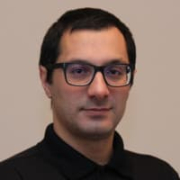

Amazon AWS and Azure Red Hat OpenShift are leading platforms in the cloud computing category. AWS often appears superior due to its flexible pricing models, making it economical for startups and established enterprises. Azure Red Hat OpenShift, though pricier, stands out for businesses focusing on multi-cloud strategies and Kubernetes-centric environments.
Features: AWS offers scalable services, strong integration capabilities, and robust security features. Key attributes include Auto Scaling, EC2 instances, and dynamic pricing options. Azure Red Hat OpenShift features advanced multi-cloud application development, deployment, and hybrid cloud capabilities, making it ideal for businesses requiring infrastructure flexibility.
Room for Improvement: AWS could enhance its customization options and streamline its complex documentation for easier navigation. There's also room for more region-specific features to cater to diverse markets. Azure Red Hat OpenShift may benefit from more cost-effective pricing models, better integration with more third-party services, and simplified user management processes.
Ease of Deployment and Customer Service: AWS facilitates deployment with comprehensive documentation and training resources, benefiting enterprises with varied support channels. Azure Red Hat OpenShift focuses on streamlined deployment with an intensive focus on Kubernetes, appealing to those needing specialized container management solutions.
Pricing and ROI: AWS's flexible pricing models are cost-effective, ensuring a strong ROI by only charging for resources consumed, which benefits startups and established enterprises. In contrast, Azure Red Hat OpenShift, despite higher initial costs, offers significant ROI for companies leveraging its advanced Kubernetes and multi-cloud features, translating pricing into value for flexibility and specialization.
| Product | Market Share (%) |
|---|---|
| Amazon AWS | 13.6% |
| Azure Red Hat OpenShift | 0.7% |
| Other | 85.7% |


| Company Size | Count |
|---|---|
| Small Business | 131 |
| Midsize Enterprise | 48 |
| Large Enterprise | 112 |
| Company Size | Count |
|---|---|
| Small Business | 1 |
| Midsize Enterprise | 3 |
| Large Enterprise | 7 |
Amazon Web Services (AWS) is an adopted cloud platform that offers more than 200 fully featured services from data centers located across the globe. This is a scalable, low-cost infrastructure platform in the cloud that is utilized by thousands of businesses of different sizes around the world. The product offers a wide variety of solutions for its customers, which allows them to launch applications regardless of their industry.
The most common use cases for AWS are:
Amazon AWS supports a global cloud infrastructure with AWS Region and Availability Zone models, which contribute to the high availability of enterprise applications running on the solution. Amazon AWS has an extensive array of products that serve different purposes, including:
The products and services that Amazon AWS delivers to these sectors provide a large computing capacity which is quicker and cheaper compared to building a physical server farm. Among the most popular services are Amazon Elastic Compute Cloud, also known as "EC2," and Amazon Simple Storage Service, also known as "S3."
Amazon AWS Features
The wide array of products that Amazon AWS offers consist of different functions that utilize cloud computing across different sectors. The features of this solution can be categorized in the following ways:
Amazon AWS Benefits
This product delivers various benefits across all industries that utilize its services. The greatest advantages of using Amazon AWS include:
Reviews from Real Users
Greg G., a chief executive officer at a tech services company, ranks Amazon AWS highly, as he states that the solution is flexible, scales well, and offers good stability.
A technology manager technology at a computer software company values Amazon AWS because it is extremely cost-efficient, easy to upgrade and expand storage with greatly improved interfaces.
Azure Red Hat OpenShift provides highly available, fully managed OpenShift clusters on demand, monitored and operated jointly by Microsoft and Red Hat. Kubernetes is at the core of Red Hat OpenShift. OpenShift brings added-value features to complement Kubernetes, making it a turnkey container platform as a service (PaaS) with a significantly improved developer and operator experience.
We monitor all PaaS Clouds reviews to prevent fraudulent reviews and keep review quality high. We do not post reviews by company employees or direct competitors. We validate each review for authenticity via cross-reference with LinkedIn, and personal follow-up with the reviewer when necessary.